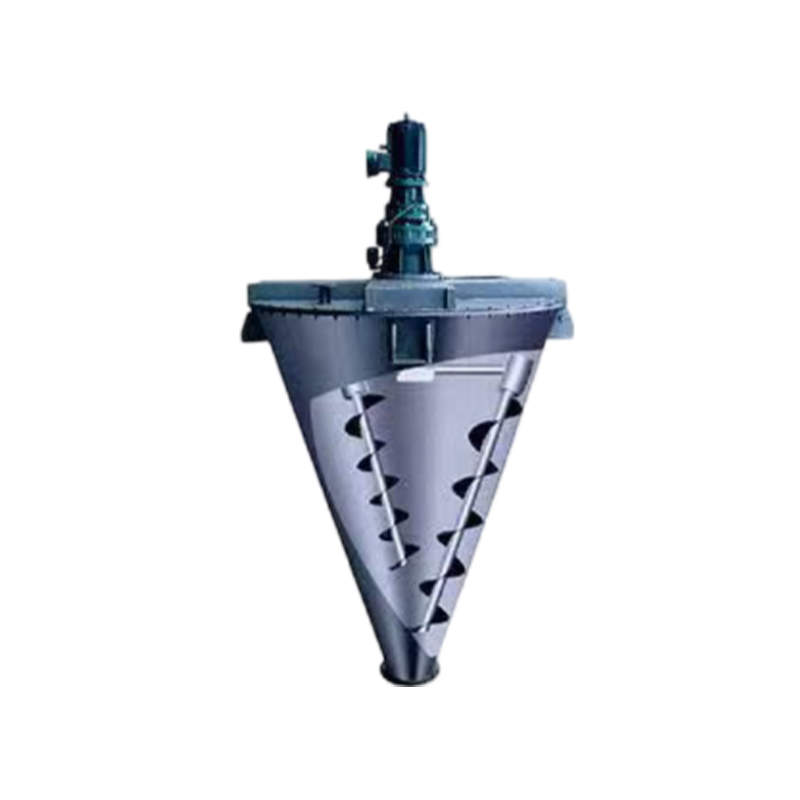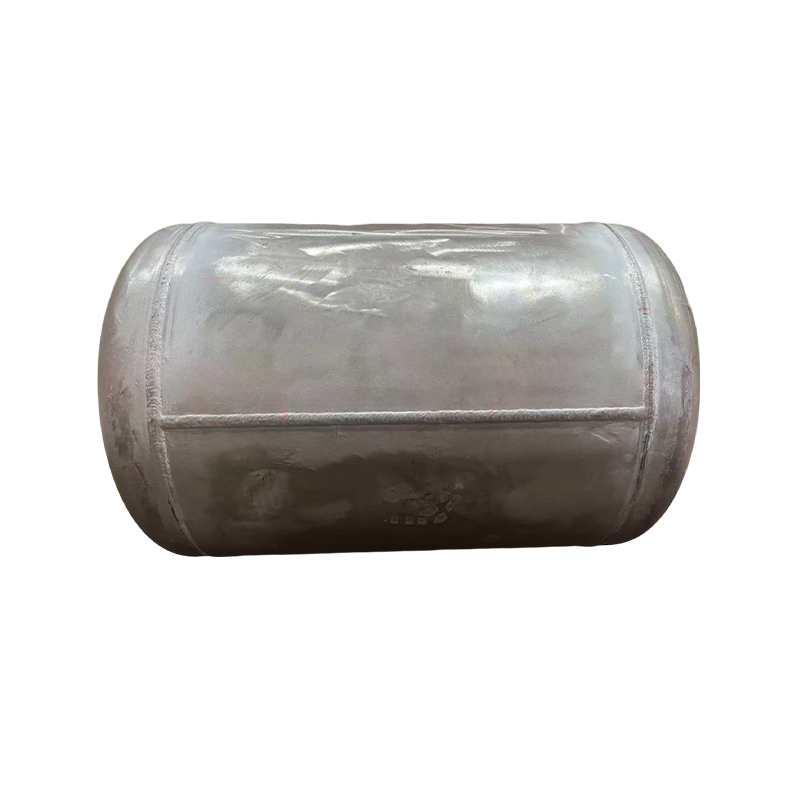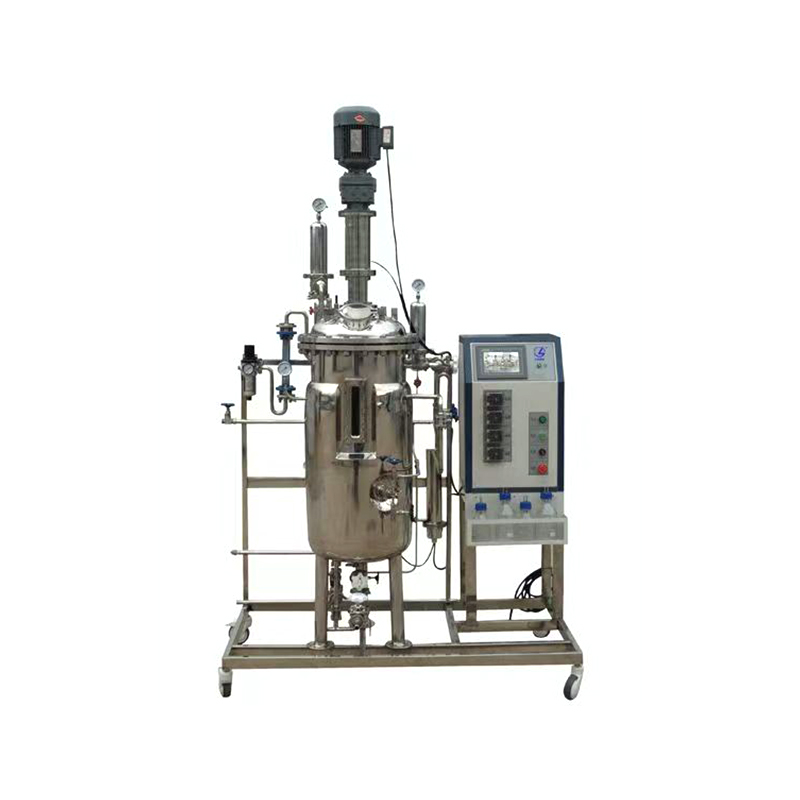What is the impact of the capacity of the mixing tank on the mixing effect and production efficiency?
Release Time : 2025-03-26
As an indispensable equipment in industrial production, the mixing tank is widely used in many fields such as coatings, medicine, building materials, chemicals, pigments, resins, food and scientific research. Its capacity, as one of the key parameters of the mixing tank, has a vital impact on the mixing effect and production efficiency.
First of all, from the perspective of mixing effect, the capacity of the mixing tank directly affects the flow state and mixing uniformity of the materials in the tank. For a mixing tank with a smaller capacity, due to the relatively small amount of materials, the agitator can more easily drive the materials to flow and mix in all directions, thereby ensuring the uniformity and consistency of the mixing. However, when the capacity of the mixing tank is too large, the flow of materials in the tank will be subject to certain restrictions, especially at the edges and corners of the agitator, where uneven mixing is prone to occur. This will not only affect the final quality of the product, but may also lead to a decrease in production efficiency.
Secondly, the capacity of the mixing tank is also directly related to the level of production efficiency. For a small-capacity mixing tank, the batches of materials it processes are relatively small, and the time and energy consumption required for each mixing are relatively low. Therefore, in the small-scale production or sample preparation stage, a small-capacity mixing tank has more advantages. However, when the production scale is expanded and a large amount of materials needs to be processed, a small-capacity mixing tank is unable to cope with it. At this time, a large-capacity mixing tank can process more materials at one time, reduce the waiting time between batches, and thus improve production efficiency. However, it is worth noting that if the capacity of the mixing tank is too large and the actual amount of materials processed is small, it will not only waste energy, but also may cause uneven mixing.
In practical applications, the selection of the capacity of the mixing tank needs to be comprehensively considered according to production needs, material characteristics and mixing requirements. For materials that require a large amount of mixing and have high requirements for mixing uniformity, a slightly larger capacity mixing tank can be appropriately selected to ensure that the mixing effect and production efficiency are taken into account. At the same time, attention should also be paid to the matching of parameters such as the material of the mixing tank, the type of agitator, and the stirring speed to further optimize the mixing effect and improve production efficiency.
In addition, the capacity of the mixing tank is also closely related to the difficulty of its cleaning and maintenance. A mixing tank with a smaller capacity is relatively more convenient to clean and maintain, while a large capacity mixing tank may require more time and resources for cleaning and maintenance. Therefore, when choosing a mixing tank, its subsequent maintenance and use costs must be fully considered.
In summary, the capacity of the mixing tank has a significant impact on the mixing effect and production efficiency. In practical applications, a reasonable choice should be made based on production needs, material characteristics, and mixing requirements to ensure that product quality and production efficiency are improved simultaneously.
First of all, from the perspective of mixing effect, the capacity of the mixing tank directly affects the flow state and mixing uniformity of the materials in the tank. For a mixing tank with a smaller capacity, due to the relatively small amount of materials, the agitator can more easily drive the materials to flow and mix in all directions, thereby ensuring the uniformity and consistency of the mixing. However, when the capacity of the mixing tank is too large, the flow of materials in the tank will be subject to certain restrictions, especially at the edges and corners of the agitator, where uneven mixing is prone to occur. This will not only affect the final quality of the product, but may also lead to a decrease in production efficiency.
Secondly, the capacity of the mixing tank is also directly related to the level of production efficiency. For a small-capacity mixing tank, the batches of materials it processes are relatively small, and the time and energy consumption required for each mixing are relatively low. Therefore, in the small-scale production or sample preparation stage, a small-capacity mixing tank has more advantages. However, when the production scale is expanded and a large amount of materials needs to be processed, a small-capacity mixing tank is unable to cope with it. At this time, a large-capacity mixing tank can process more materials at one time, reduce the waiting time between batches, and thus improve production efficiency. However, it is worth noting that if the capacity of the mixing tank is too large and the actual amount of materials processed is small, it will not only waste energy, but also may cause uneven mixing.
In practical applications, the selection of the capacity of the mixing tank needs to be comprehensively considered according to production needs, material characteristics and mixing requirements. For materials that require a large amount of mixing and have high requirements for mixing uniformity, a slightly larger capacity mixing tank can be appropriately selected to ensure that the mixing effect and production efficiency are taken into account. At the same time, attention should also be paid to the matching of parameters such as the material of the mixing tank, the type of agitator, and the stirring speed to further optimize the mixing effect and improve production efficiency.
In addition, the capacity of the mixing tank is also closely related to the difficulty of its cleaning and maintenance. A mixing tank with a smaller capacity is relatively more convenient to clean and maintain, while a large capacity mixing tank may require more time and resources for cleaning and maintenance. Therefore, when choosing a mixing tank, its subsequent maintenance and use costs must be fully considered.
In summary, the capacity of the mixing tank has a significant impact on the mixing effect and production efficiency. In practical applications, a reasonable choice should be made based on production needs, material characteristics, and mixing requirements to ensure that product quality and production efficiency are improved simultaneously.







